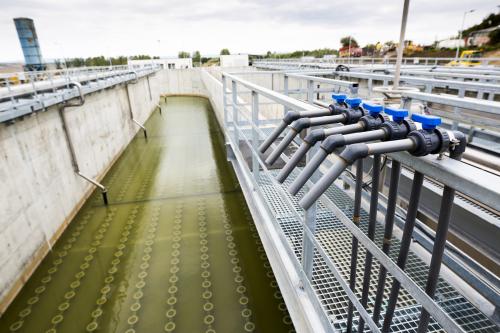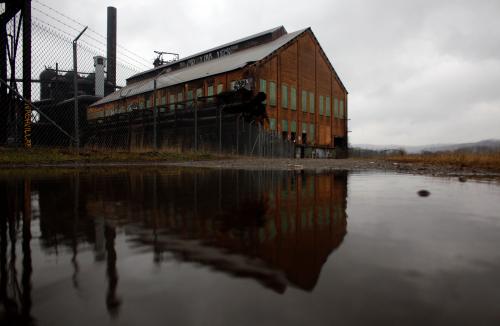This post is part of a series exploring infrastructure from an individual’s perspective. What really matters to people when they rely on infrastructure to access economic opportunity? Within each post, we examine infrastructure through the lens of people’s expectations: whether infrastructure is physically accessible, whether services are affordable, and whether infrastructure protects us from risk. Our results show that infrastructure often creates economic barriers and policymakers could do a better job of measuring and meeting people’s needs.
As we go about our daily lives, Americans have simple expectations for infrastructure: we want services that work. We want lights to turn on when we flip a switch, we want clean water to run out of our taps, we want web pages to load when we turn on our computers and smartphones, and we want roads and rails to be open to traffic. We want physical access to high-quality infrastructure, which offers safe, convenient, reliable, and affordable options.
When the power is on, water is clean, data can flow, and people and goods can move, infrastructure serves as the foundation in our economic Hierarchy of Needs. But that foundation is only as strong as the number of people it serves. If everyone cannot connect to essential infrastructure—or if those connections are not of a certain quality—we risk disabling economic opportunity for the disconnected.
The United States has a relatively strong record of offering infrastructure access to people and the communities where they live, but the quality of this access can vary widely. These “access gaps” exist across all categories of American infrastructure, creating stark inequities felt most acutely by some of the country’s most economically vulnerable populations.
These kinds of access inequities can be seen when comparing the two most essential infrastructure systems: water and electricity. Surveys find electricity is technically available to every household, and utilities consistently deliver reliable service, meaning the service is nearly always “on.” The average American customer faces 1.34 outages a year, a number that’s been slowly rising, but still equates to only about 2.5 hours of lost service all year (or 0.03 percent of all hours). By contrast, about one percent of all homes lack plumbing facilities, according to the American Housing Survey. This equates to over a million households, and the rates are even higher among black, American Indian or Alaska Native, and multi-race households. Even more troubling is the quality of that water. Just 92 percent of households report safe drinking water across all racial groups, with even lower rates again among nonwhite households.

Access gaps are far more pronounced for the newest essential infrastructure: broadband. The first challenge is one of coverage. In-home wireline gaps grow as speed rises, 7 percent of households live in neighborhoods without access to broadband speeds (a notably contentious issue). The gaps are especially pronounced in rural America where there is a 27 percent gap, putting both their residents and industries at a disadvantage. Equally concerning are speed inconsistencies within urban neighborhoods like Cleveland, Ohio, where shortfalls often correlate with economically disadvantaged communities. And while wireless internet could eventually help fill these gaps, that service should merely complement an always-on, uncapped wireline connection.

From a consumer’s perspective, access to transportation theoretically presents the widest array of service types. But too often, the country’s transportation network and related land uses leave individuals with little choice about how to travel. The continued suburbanization of people and jobs only grows the distances between both. This kind of built environment can make driving feel like the only option to many, and it’s no wonder the U.S. Census Bureau consistently finds that over 85 percent of Americans either drive alone or carpool to work. It’s especially challenging for the growing number of low-income households who either live or work in the suburbs, compelling them to take on the higher costs of driving, a topic we’ll dive into deeper in a follow-up post. However, when people live, work, and play in denser settings, we know they’re more likely to bike, walk, and use transit (Figure 3).

Across all infrastructure sectors, these kinds of access gaps and the people they impact come at a real cost to the American economy. Yet there is significant innovation underway to improve the extent and quality of the American infrastructure experience. The question is whether new accessibility innovations will positively impact all households.
E-commerce is a perfect example of such an innovation. The rapid rise in electronic retail can streamline the personal shopping experience, unlock lower prices, and eliminate personal transportation trips. But there are also real barriers to using e-commerce: it is made much easier by an in-home or wireless data service, demands digital skills, and it requires some form of digital banking. As a result, most of these travel and price benefits disproportionately flow to higher-earning households. Broadband access and digital banking are also requirements for other infrastructure innovations like online utility monitoring, bike-sharing, and ride-hailing services.

It’s reasonable to expect infrastructure services to continue to evolve, offering new ways to manage our homes and travel around our communities. Theoretically, such innovative services could create untold economic benefits. But as long as barriers to accessing the newest and best services exist—whether related to digital skills, lack of affordability, or something else—there is a natural cap on how broadly the benefits can be felt. Limited access to infrastructure, therefore, is that important to effectively address.
Thank you to Annibel Rice for research assistance.
The Brookings Institution is committed to quality, independence, and impact.
We are supported by a diverse array of funders. In line with our values and policies, each Brookings publication represents the sole views of its author(s).






Commentary
A ‘people first’ perspective on infrastructure: Delivering access
May 8, 2018